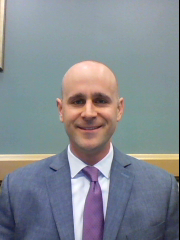Tuesday, June 27, 2017: 8:00 AM-9:30 AM
Building Life Safety Systems
Chair:
Scott Sherwood, Eco Care Corporation
Technical Committee: 2.5 Global Climate Change
Sponsor: 4.2 Climatic Information
CoSponsor: 2.8 Building Environmental Impacts and Sustainability
An in-depth discussion regarding the issues and decisions that NYC building engineers, architects, and facility operators faced during and in the aftermath of Superstorm Sandy. Understanding the response by a major NYC healthcare facility and the initiatives taken to increase sustainability, resilience, and an environmental friendly facility. Understanding what kind of climatic data and trending is available from ASHRAE to the ASHRAE community and the type of information sought by engineers, architects, and facility operators). Discuss the terms, people, and issues involved in understanding climatic events and the effects on life safety & HVAC&R systems.
1 Superstorm Sandy: Lessons Learned
Superstorm Sandy provided an extreme climate event to learn many lessons on how buildings were designed and how they operated during and in the aftermath of Hurricane Sandy. This includes the infrastructure that is so vital to the operation of Buildings and their HVAC&R systems.
2 Superstorm Sandy: New Codes & Design Considerations
Discuss of NYC sustainability and resilency strategies during and in the aftermath of Hurricane Sandy. New codes and design requirements to strengthen the HVAC&R and life safety systems of buildings during extreme climate events.
3 Life Safety Issues That Occurred at NYU Medical during and in the Aftermath of Superstorm Sandy
Discuss the issues and situations that occurred at NYU Medical during Superstorm Sandy in regard to life safety and HVAC&R. Infrastructure design changes to reduce/eliminate the effects of future flooding/climatic events. Discuss how NYU achieved significant energy savings and energy reduction, while reducing its carbon footprint.
4 Climatic Information: History & Current Data & Trending
This presentation discusses the history of climate change and the founding scientists whom developed instrumentation to measure climate change predictors and parameters, i.e., ozone depletion, global warming, CO2 levels, etc.






